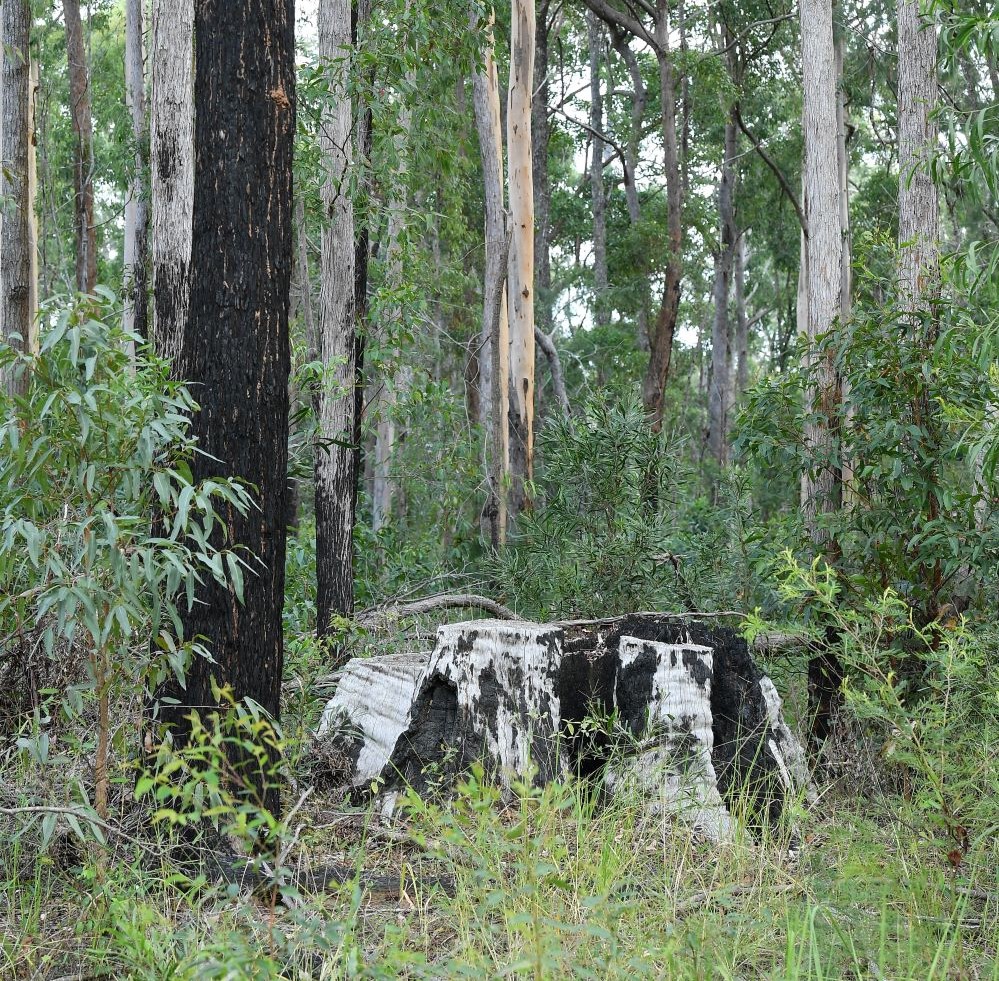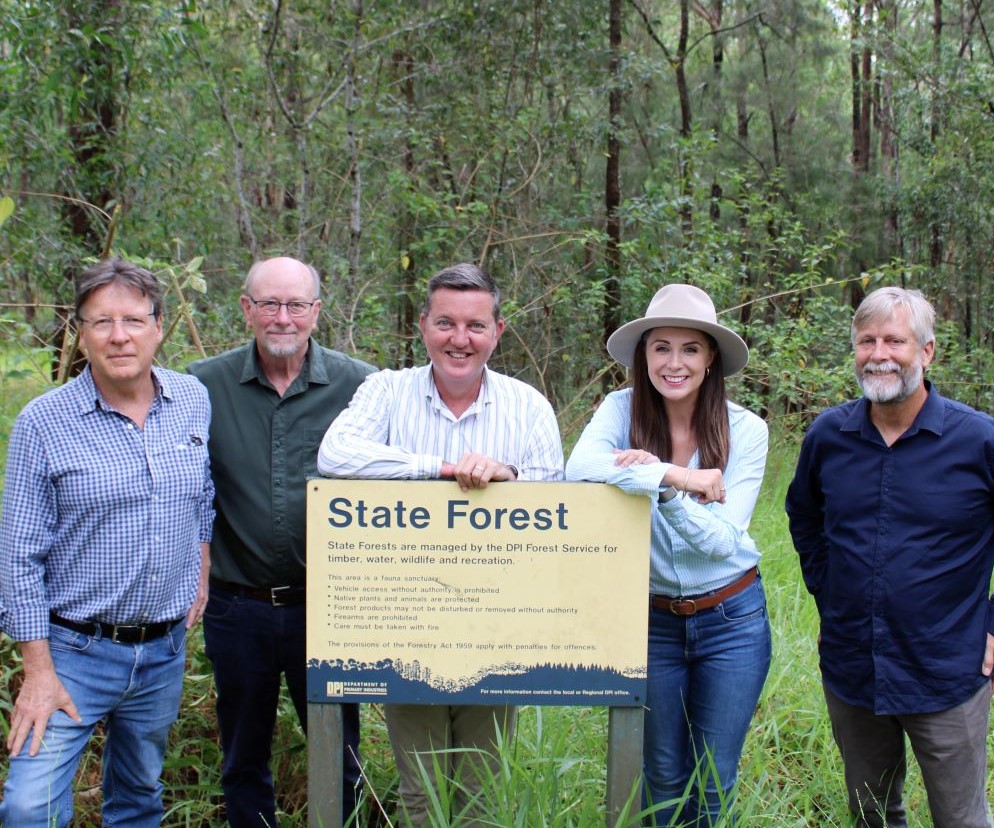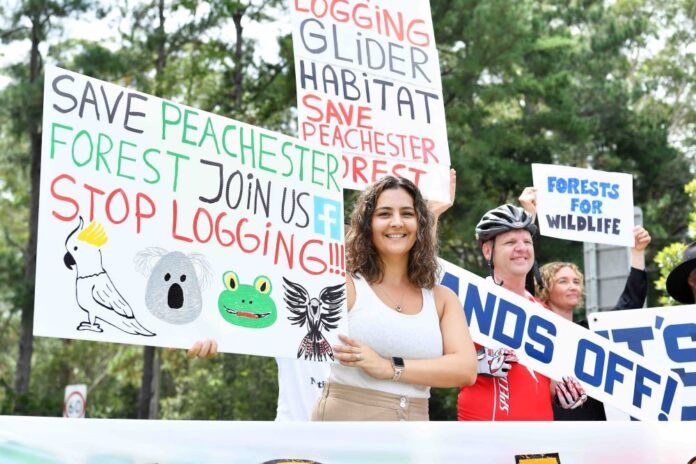Local community and conservation groups are celebrating after the State Government announced that two Sunshine Coast hinterland state forests will be officially protected.
Parts of Peachester State Forest and Beerburrum West State Forest, located in the Glass House Mountains region, have been identified as priority additions to Queensland’s protected areas.
Areas of plantation timber in these state forests will be excluded from the transfer.
It comes after community groups joined the Queensland Conservation Council’s calls to protect the forests – and the endangered species habitat within them – from logging.
A Department of Agriculture and Fisheries spokesperson confirmed native timber harvesting in these forests had ceased.
“All selective native timber harvesting operations in the Peachester, Luttons and Beerburrum West state forests have been completed and there are no plans for any further harvesting,” the spokesperson said.
Residents recently formed the Save Peachester and Luttons State Forest Facebook group and launched a change.org petition called Save Peachester and Luttons State Forests.

The announcement means the two forests, combined with Luttons State Forest, will protect open eucalypt forest, rainforest and coastal wallum remnants, which are home to threatened species such as koalas and greater gliders. They also support a range of regional ecosystems of state and national conservation significance.
The identification of these two state forests follows the announcement in December that Luttons State Forest, parts of Deer Reserve, Wickham Timber Reserve, Ferny Forest, Beerwah Forest Reserve, West Cooroy State Forest and Mount Mee State Forest had been prioritised for transfer this year.
Related story: Saved! Key forests avoid one final chop
QCC protected areas campaigner Nicky Moffat welcomed the announcement as significant for the Sunshine Coast area.
“It’s a partial victory,” Ms Moffat said.
“The local community has been calling for its forests to be protected. It is great that threatened species habitat and other conservation values in these areas will now be safe.
“Locals are still awaiting confirmation that the remaining 2673ha at Luttons, Peachester and Beerburrum West state forests will be protected. But it’s a great start.”
Do you have an opinion to share? Submit a Letter to the Editor at Sunshine Coast News via news@sunshinecoastnews.com.au. You must include your name and suburb.
She said it was positive news that these areas have been protected ahead of the 2024 deadline for the ending of native forest logging in South-East Queensland.
“Doubling Queensland’s protected areas from 8.2 per cent to 17 per cent of the state will require about 15 million hectares of new conservation reserves and national parks. We hope to see many more announcements like this in coming months,” she said.
“There are 70,000 hectares to protect in South-East Queensland, and we will be working with local communities to ensure all high-conservation-value native forests in Queensland are protected.”

Environment Minister Meaghan Scanlon said the government was delivering on its election commitment to increase the size of Queensland’s protected areas.
“Across Queensland, we now have more than 14 million hectares of protected area, which we will continue to grow thanks to our record $262.5 million to expand and create new national parks,” she said.
Member for Nicklin Rob Skelton said the surrounding national park included 20 plant species of national conservation significance, including open eucalypt woodland and heath vegetation.
“We will consult with the traditional owners, the Kabi Kabi People’s Aboriginal Corporation, to ensure the natural and cultural values of the state forests are protected and conserved,” he said.
Member for Caloundra Jason Hunt said the government had committed to add up to 20,000 hectares of state forest in the South-East to Queensland protected area before December 31, 2024.
“The Glass House Mountains are so magnificent they are listed on the National Heritage Register as a landscape of national significance,” he said.
Queensland’s protected area system includes a mix of state-owned and managed protected areas, Indigenous-owned national parks jointly managed by traditional owners and the Queensland Parks and Wildlife Service, and privately owned and managed nature refuges including those owned and managed by Indigenous people.
SUBSCRIBE here now for our FREE news feed, direct to your inbox daily.





